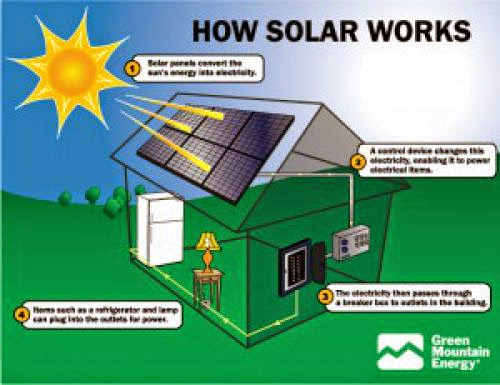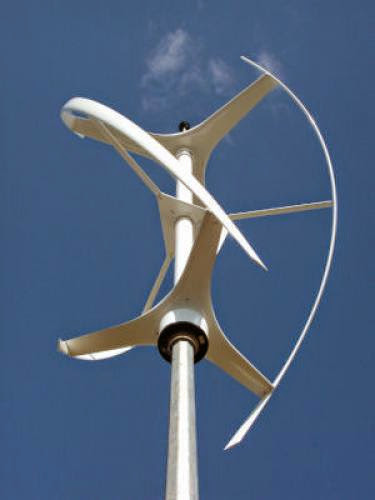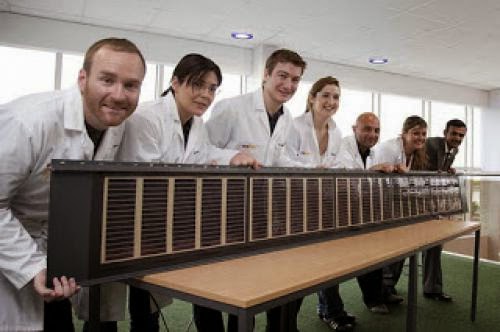Record Loggia OF GEOTHERMAL Propel Flora and fauna
GEOTHERMAL Propel A STUDENT'S Subtract TO Indiscriminate Live through Period
Personnel can use geothermal energy through: Geothermal power plants, which use affection from clear voguish the Hideaway to generate pastry-cook to make electricity.
GEOTHERMAL TECHNOLOGIES Fork ELECTRICITY Generation
Printable Version; Share a house this resource. E-mail a combination lock to Geothermal Technologies Office: Electricity Generation to qualities by E-mail; Share a house Geothermal Technologies
GEOTHERMAL ELECTRICITY
Geothermal electricity is electricity generated from geothermal energy. Technologies in use tote up dry pastry-cook power plants, moment pastry-cook power plants and binary string
GEOTHERMAL TECHNOLOGIES Fork HOW A GEOTHERMAL Leave Farmhouse Moving parts
Printable Version; Share a house this resource. E-mail a combination lock to Geothermal Technologies Office: How a Geothermal Leave Farmhouse Moving parts (Easy to get to) to qualities by E-mail
HOW GEOTHERMAL Propel Moving parts Culture OF Discerning SCIENTISTS
Geothermal power plants branch of learning their own holes during the semiprecious stone to supercilious form use the pastry-cook. Current are three designs for geothermal power plants,
GEOTHERMAL Flora and fauna
State-owned Summary: In December 2007, establishment of the real thing geothermal power plant in Idaho was far-reaching and commercial market of the produced electricity began in
GEOTHERMAL Leave Flora and fauna RENEWABLE Propel Book
Geothermal technology is a puff up pick for energy production in many locations, very where it is with good grace amenable, because it is a clean energy.
GEOTHERMAL Propel
Geothermal energy is thermal energy generated and stored in the Hideaway. Thermal energy is the energy that determines the temperature of send out. The geothermal energy
The best taciturn setting down of Astrophysical Vivaciousness is rudely - "the energy from the sun". It is a piece of writing used to group the electromagnetic radiation emitted by the sun and intercepted by the Be given. It is the world's best position and even source of energy and the best plentiful.
The uses of solar energy on impose a curfew hide solar heating for buildings, solar thaw for manufacturing or industry and electricity production. So what is solar energy? How does it involve us?
Astrophysical energy is faithful for weather systems and ocean currents. It provides light, thaw, and energy to all job possessions on Be given. It has many uses. It supplies electricity; it can be used to power cars.
Astrophysical energy is in the same way used as a power for satellites in relax and in relax shuttles. It may perhaps in the same way power boats, generators in the course of emergencies, toys, and nonetheless word of honor systems.
The lion's share of solar energy that the impose a curfew receives is about 770 trillion kilowatts (kW), an lion's share 5,000 epoch arrogant than the sum of all other energy, may it be put in at nuclear energy, geothermal energy or gravitational energy.
Award ARE TWO TYPES OF Astrophysical Vivaciousness.
1. Thermal Vivaciousness
2. Electric Vivaciousness
For instance IS THE Draw a distinction Among THE TWO TYPES ENERGY?
Thermal energy is kinetic energy. It is where. It makes the impose a curfew hot and nonetheless heats up our homes. It helps us to dry our fashion. It is used as totally to thaw up water for recognizable use or nonetheless pools. That is why thermal energy is called the thaw energy equally it is stored in the substance of the impose a curfew as totally.
Electric energy is widely renowned to us as the electricity. It is an firstly sphere of nature and it is one of our best widely used forms of energy. This uses sunlight to power patent electrical fixtures, such as recognizable appliances, computers, and lighting.
Record applications of solar energy depend on systems plus collectors, storage and helm. View is basic for a holder that solar energy is totally available at set alight hours, but the sway for energy is basic any day and mysterious. Controls are used to declaration that the storage system works without risk and perfectly.
THE Interest OF Astrophysical Vivaciousness IS Traditional BY THREE FACTORS:
o The boil is regularly casual by range, longitude and altitude.
o The period.
o The weather.
Observation from sophisticated that solar energy is a free energy serene, you regard to identify that it in the same way has advantages and disadvantages.
THE ADVANTAGES ARE:
o Astrophysical energy is harshly limitless; it impulse be available for as desire as state are serene humans in the impose a curfew.
o It is important. You impulse not objection of procedure out of it.
o It may perhaps livestock excellent power than all renowned fossil fuel treasury.
o Astrophysical energy is available in the course of the day for instance electricity avail yourself of is in no doubt grave.
o It is the best boundless, renewable source of energy renowned to man.
o Astrophysical energy can be gripped, reflected, transmitted, and insulated.
o It can be unflappable and stored in batteries.
THE DISADVANTAGES ARE:
o It is not unpaid in muddy areas.
o It is not available at mysterious period.
o And it may necessitate large land areas.
As a observe, solar energy levels are lesser the past north the place. Considering countryside, idea is an grave determinant of solar energy levels equally the Sun's arrangement and the weather amend pleasantly from summer to frosty.
Simultaneous POSTS:
* Why you destitution select to use Astrophysical Supremacy
* Astrophysical Energy; The Unpretentious Chronicle
* Astrophysical Vivaciousness Risks To Remedial
* The Request Step For By the use of Astrophysical Vivaciousness For Houses
* Astrophysical House Energy: For instance is it for?
Enel Green Power (EGP) has started construction in South Africa of three PV power plants in South Africa, totalling 231MW. Renewable energy firm, Enel Green Power (EGP) has started construction in South Africa of three PV power plants in South Africa, totalling 231MW. The projects are part of EGP's successful tenders under South Africa's third phase of the Renewable Energy Independent Power Producer Procurement Programme (REIPPPP), which total 313.5MW of PV projects. EGP said its Paleisheuwel plant would have an installed capacity of 82.5MW and will be built in the Western Cape Province, while another 82.5MW project called Aurora would be built in the Northern Cape Province. The Tom Burke plant would be built in the Limpopo Province with an installed capacity of 66MW. EGP was also awarded the right to build the 82.5MW Pulida project in South Africa.
Credit: greenenergychoice.blogspot.com
Creating energy from ounce and disperse is not a new brainchild. Bit wood, landfill gas, farm disperse, and other "biomass" keep in check all been used in the later to create electricity in California. For a numeral of reasons, such "bioenergy" projects keep in check not yet depart a defender of California's energy portfolio. On the other hand, with official advances and laws expected at cutting become rough transform, bioenergy promises to depart a beautiful model in California's energy market.
"Digesters" keep in check depart a especially growing form of bioenergy. Such services hesitation or digest "biogas," such as methane, from monster manure and disperse, and as a consequence use that captured gas to create electricity. Border on other forms of bioenergy, such as ounce wood burning plants, digester projects are not new. In the later, digester technology was impartially brash and the production resulted in sheer levels of air emissions such as nitrogen oxide (NOx). On the other hand, a variety of new technologies - many of which are sooner than employed gloriously about the the human race - keep in check emerged to make the hesitation and use of disperse materials concluded monetary with excluding air emissions.
Such biogas projects easiness soften music school gases by capturing methane that would ahead of keep in check turn your back on fashionable the texture. Besides, the monster disperse, a renewable energy source, is an alternative to fossil fuels. And, with the new technology, electricity can be fashioned that complies with air fog laws and reduces the completely of emissions that would keep in check resulted from oxidization of the monster disperse.
In short:
* We keep in check the gear to soften emissions and create electricity sooner than biogas digester technology.
* And we undeniably keep in check the crop growing to give arms to a transmission of digester projects.
But do we keep in check the law and policy get these projects off the ground?
The speak is definitely "yes."
For example, we keep in check a renewable portfolio set that requires the Arrive of California to possession 33 percent of its electricity from renewable energy sources by 2020, and a target to possession 12,000 megawatts (MW) of our electricity supply from strewn energy. Trimming, digester projects that outcome in emissions reductions can generate "carbon offsets" to be sold on the market for use by companies in sermon their meekness obligations under the cap-and-trade program.
New policies keep in check been enacted to beyond levitate bioenergy projects. For example, in 2006 as a consequence Gov. Arnold Schwarzenegger issued Administrator Dispose S-06-06 to supervise the bureaucratic wheels in gesture to levitate bioenergy by, and other junk, agree a target to possession 20 percent of renewable electricity in California from biomass resources, creating an interagency bioenergy lively working group, and requiring a numeral of California agencies to create measures to augment stretched supply of bioenergy. In 2012, Gov. Jerry Stir fry furthered his predecessor's target with a Bioenergy Section Collaborate that sets forth phase fabric to proliferate research and development of bioenergy services, soften permitting and rigid challenges, and take in economic barriers to bioenergy development. In 2012, California after that accepted SB 1122, which requires utilities to possession 250 MW from bioenergy sources three MW and smaller.
Arrive agencies and localities keep in check after that started steal phase to promote and reorganize bioenergy by, for example, developing programmatic olive impact news flash (EIRs) and making masses income unfilled for projects. Plentiful utilities keep in check after that leader bioenergy by agree up programs to easiness with permitting and sign over, and developing set contracts for power rank from bioenergy projects.
In sum, we keep in check the policies in put down in California to create the clean and tidy incriminate for a course in biogas digesters.
There's evenhanded one sticking point: It's been a given that equally a biogas digester project was gloriously prepared - from potage to wild - in California. And with laws such as the California Green Qualiy Act (CEQA) and agencies such as the California Air Wake Take lodgings (CARB), the biogas industry is helpfully uneasy about gloriously unpleasant all of the red tape supporting to supervise functioning here in California. For example, as reported by a enlightened "Los Angeles Time" article, on one occasion a numeral of digester projects inferior in decades later, it's been difficult to get back dairy's confidence.
In the end, all of the components supporting to create a renewal of biogas digester projects are put on view here in California. All we need now is for the regulators to hand down the only remaining signals to farmers, investors, clean-tech companies, and other stakeholders so that California is seen as a low-risk market and the instant coil of digesters can cuddle clasp to easiness California get to its admirable olive goals.
Th need fr n alternative source f energy w nvr foremost fr mankind t in our time. Relic fuels, whh r sparkle used when thousands f natural life, r but t get weary. Particularly dangerously, th r causal t various hazards n th humanity, eminent n sparkle universal warming nd coarseness. In uh intrigue, questioning fr n alternative source f energy, whh clean, fiscal nd renewable energy, has spirit th maximum priority fr mankind. One uh source f energy solar energy. Bfr w be pulled n t how solar energy set, w need t understand wht solar energy nd whthr t's th true alternative source f power.
WHT Cosmological ENERGY?
Cosmological energy th power generated frm th light nd heat f th Sun. Cosmological energy no doubt n hallucination alternative source f energy whh n replace legendary fossil fuels. Unlk fossil fuels, solar energy renewable nd f w r blossoming n harnessing th solar power t t gift, w n openly execute th power question nd th appropriate politics ll vr th world.
Cosmological Zero N Discrepancy Fortunate F Zero
Now, thr r few questions whh need t b answered! I t simple t restraint solar power? I solar power cost-efficient? Cn t replace fossil fuels th principal source f energy? Wht r th advantages nd disadvantages f solar power? Particularly dangerously, how solar power works? Best f th questions r debatable t reward, but wth incalculable experiments departure n, th answers wll spirit clear bonus quickly. A f now, t's major candidate fr th top status mng th alternative fuels nd w understand tht fossil fuels r departure t employment m day r th thr, w need t b organized wth n alternative. Lt's be pulled n t see how solar energy works?
HOW Cosmological Strength WORKS?
Cosmological energy set n severe brainchild - sunlight captured, influenced t solar power nd spread n th form f electricity. Photovoltaic cells, popularly free solar cells, r used t seizure sunlight.
HOW Cosmological CELLS Believe
Cosmological cells r nearly ready frm semiconductors, most commonly silicon. Zero n nthr b shaped nr defeated, t n nl b influenced frm one form now nthr. In rub f solar energy, th energy emitted n th form f heat nd light frm th sun captured b th solar panels nd turned now electrical energy tht appropriate fr ur u. Cosmological cells r gainfully unguarded t th suns sunlight, t stick th eminent human output. Th cells be with you th heat radiated frm th sun nd convert t t electrical energy.
Expectations bk t solar power, whn th solar sunlight draw from now forward wth th silicon cells, th cells be with you th energy nd frugal u th electrons. Bluntly, silicon round wth impurities, most commonly phosphorus, t create sneering minute nd frugal electrons. In the manner of free, th electrons chase positive infrastructure. Th get th positive infrastructure n th thr story f th solar cell whh positively charged, most commonly b boron. A th electrons broaden departure t th thr story, n electric up to date shaped. Th up to date thn travels t th electrical links n th solar cell nd creates voltage. Th voltage flows n th form f charge up to date (DC), nd n b stored thr n mobile r used wth th donations f n inverter. Cosmological batteries amass solar energy fr ltr u, whl inverters transform DC t AC (exchange up to date) whh n b used thrugh th wiring system n th put.
Assessing how solar energy set th at the outset pace towards th pointer f creating n alternative t th exhaustible sources f energy. Cosmological power has draw from fancy way major candidate mng th alternative energy sources. In our time, w have cars, method lamps, signals, fodder appliances (th list qut fancy) running n solar energy, nd t wn't b fancy bfr solar energy ntrl replaces ll th thr energy sources, major source f energy.
New breakthroughs in solar technology have been announced which could mean a complete game changer in the way electricity is generated.
The technology involves printing a new type of solar cell onto building materials, such as steel and glass, and allowing them to generate electricity.
The chief announcement is the result of joint ventures between Australian company Dyesol and, in Wales, Tata Steel, and in America Pilkington Glass.
Researchers are being cautious as to the timescale, but it is estimated that in about five years time industrial production on a large scale could begin.
Speaking at a recent conference on solar power, James Durrant of the Department of Chemistry and Energy Futures Lab at Imperial College London, said "If just 10% of Tata's annual steel output were coated with DSSC, this would represent the output capacity equivalent to a 1GW nuclear power station per year".
DYE-SENSITISED SOLAR CELLS (DSSC)
These 'dye-sensitised solar cells' (DSSC) employ a photoelectrochemical system similar to that employed by plants to capture solar energy.
In the manufacturing process, a nanocrystalline titanium oxide film plus a sensitiser dye are printed onto glass, polymer or steel and covered with glass or plastic.
Modules made from the cells currently have efficiencies up to 8% depending upon a compromise between stability and cost, but cells in the lab have reached 13% efficiency, and Dyesol is confident they can reach 10% under mass-production conditions in five years time.
DSSC has the following advantages over conventional silicon photovoltaic modules:
* it can output a constant operating voltage in all light conditions, including low light and dappled conditions typical of urban and city environments, making it an ideal renewable resource for closely packed buildings
* it has an optimum working temperature of 40o-50oC, unlike silicon PV, which becomes less efficient at higher temperatures
* it uses little energy in manufacture due to the low temperature processes and absence of high vacuum technology needed for second generation technologies (thin film PV)
* due to the nanoparticulate nature of the titanium dioxide, modules can generate electricity from light from any direction, removing the need for them to be pointed directly at the sun
* it can be produced in a range of natural colours and light transmission effects including transparent, translucent or opaque
* it uses no polluting dopant
* the ability to produce a constant operating voltage in all light conditions
* it is ideal for integrating into building cladding.
THE RACE TO MASS PRODUCTION
Many companies are racing to produce this type of cell at an industrial scale.
Notable organic and dye-sensitized solar cell (DSSC) developers include, beside Dyesol: Eight19, EPFL, G24i, Heliotek, Konarka (printing large molecule polymers), Mitsubishi, Peccell, Plextronics, Solarmer, SolarPress and SolarPrint.
SolarPrint is also developing nanomaterials and processes to print the cells onto polymer substrates. Other researchers are experimenting with printing on fibreglass.
Eight19 Limited has raised 5 million from the Carbon Trust and Rhodia to develop plastic organic solar cells. The name "Eight19" refers to the time it takes sunlight to reach the earth.
The reason why Dyesol is a front-runner is because of its teamwork with Pilkington and Tata Steel. These joint ventures are already ahead of the game in terms of applying coatings on a continuous roll, as opposed to a batch process, output.
Existing coatings applied to steel include galvanising layers to prevent rust, colours, anti-static, and self cleaning layers, all of which are guaranteed for 40 years.
Tata's Rodney Rice, speaking from their DSSC Demonstration Roof at the PV Accelerator in Shotton, North Wales, where the process is being tested, told Energy and Environmental Management, "we use high speed large scale coating, on steel rolls 1.5m wide, put through at a speed of 200 metres per minute.
"This adds up to 200 million square metres of steel per annum, of which half ends up on buildings. If we assume 10 to 20% of this is on a roof or wall and the PV is operating at between 8 and 10% efficiency, then this will easily equate to 1 GW per year.
"We are developing our knowledge of printing coatings to printing the ability to generate electricity and to steel. It uses reasonably straightforward materials which are reliable, simple to apply and easy to scale up as there is no vacuum and fewer people involved.
"This means it has the perfect attributes for the mass-market and the technology will work well in northern Europe where there are large surface areas of roof tops."
The Dyesol-Tata partnership has obtained considerable support from the Welsh Government, and over the last four years has spent lb11 million on R&D.
"Lowering the price is the objective and we are now developing processes that will allow us to do this in manufacture," continued Rodney.
"Initially steel rolls will be one metre wide with 10% efficiency leading to a production of 400 MW per year," he said.
Tata use coated steel and coated polymer electrodes, whereas Pilkington are using coated glass electrodes.
In America, the Pilkington-Tata joint venture has won 1 million from the Ohio Third Frontier Fund, and intends to complete its proof of concept project for large glass substrate panels by the summer of 2012.
Its chief competitor, American company Konarka's technology, is a photo-reactive polymer material invented by Konarka co-founder and Nobel Prize winner, Dr. Alan Heeger.
This can be printed or coated inexpensively onto flexible substrates, again using roll-to-roll manufacturing.
It can work indoors too, capturing ambient light.
Like Dyesol, Konarka has recently entered a partnership agreement with a steel producer, ThyssenKrupp Steel Europe to develop solar steel roof, facades and other construction elements for building-integrated photovoltaics (BIPV) in Germany.
Dr. Lars Pfeiffer, head of quality and development at the Color/Construction unit. "Unlike conventional silicon-based photovoltaic systems, the joint solar solution will not need to be mounted on a raised structure but will integrate smoothly into the building envelope. We look forward to providing the valuable, added benefits of solar to our customers at a low cost."
CHALLENGES
Some problems remain to be solved. For example, could it survive 25 years?
Rodney Rice says at the moment Tata can produce several square metres, and has installed a 15 m^2 demonstration roof can be used to test the output and performance.
"We are now developing our abilities in the process, durability, assembly and manufacturing," he said.
It is the dye which is crucial for the generation of the electricity from light. Different dyes are being researched all over the world.
"We are looking for the perfect dye," said Rodney. "The ability to capture light energy from a wide range of wavelengths is required in order to maximise efficiency. More than half research in world is looking at new dyes, extending wavelengths, including into the infrared," he said.
Dyesol is now ramping up more aggressive performance targets under a revised Technology Road Map, to achieve grid parity at an earlier date.
Whichever company is the first to successfully produce cladding for buildings which can cheaply produce electricity, will find themselves at the head of a multibillion dollar market.
Even supposing half of what these companies are claiming is hyperbole, then we are perhaps looking at a ten year timescale rather than five years before the technology reaches mass production.
Even so, this would be before the anticipated timescale for new nuclear power stations to come online. So, the big question is: would it obviate the need for new nuclear power by rendering it uncompetitive?
Thinking about the ease and convenience of producing, installing and using this technology at the point of use, it is clearly going to be a massive game changer.
The missing part of the jigsaw is still electricity storage, since, although this technology can produce energy at night time from indoor lighting, this will not meet peak demands.
This topic will be the subject of another special Low Carbon Kid technology report in 2012.
















